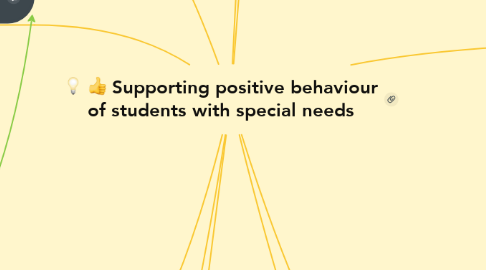
1. School Culture & Environment
1.1. School Rules
1.1.1. Expected Behaviours
1.2. Strong Relationships
1.3. Problem Solving
1.3.1. Feelings Thermometer
1.3.2. Kelso's Choice
1.3.3. Direct Teaching
1.4. Positive Praise
1.5. Community Building
1.6. Well-Being Team
2. Ontario's "Whole School" Approach
2.1. Code Conduct
2.2. Whole School Community Feeling
2.2.1. Develop Healthy Relationships
2.2.1.1. Community Agency Connections
2.3. Initiatives
2.3.1. Bullying Prevention
2.3.2. Equity and Diversity Initiatives
2.3.3. Character Development
2.4. Progressive Discipline
2.4.1. Stage of Growth & Development
2.4.2. Behaviour & Severity
2.4.3. Impact on School Climate
2.4.4. Supports
2.4.4.1. Conversation
2.4.4.2. Review of Expectations
2.4.4.3. Counselling
2.4.4.4. Anger Management
2.4.5. Consequences
2.4.5.1. An Assignment
2.4.5.2. Detension
2.4.5.3. Suspension
2.4.5.4. Expulsion
3. Professional Development
4. Asessing, Recording and Reporting Achievement
4.1. Assessment for, as, of Learning
4.1.1. Many Opportunities
4.1.2. On-going
4.1.3. Variety of Methods
4.1.4. Descriptive Feedback
4.1.5. Accommodations
4.1.6. Modifications
4.2. Report Cards
4.3. Professional Assessments
4.4. Educational Assessments
4.4.1. EQAO
4.5. Learning Profiles
5. Curriculum Planning
5.1. Learning Styles
5.1.1. Visual
5.1.2. Auditory
5.1.3. Kinestetic
5.1.4. Read/Write
5.2. Culturally Responsive Teaching
5.2.1. Culturally Diverse Resources
5.3. The Ontario Curriculum
5.3.1. Engaging Lessons
5.3.1.1. Clear Learning Targets
5.4. 7 Fundamental Principals
5.5. Evidence Based Practices
5.6. Student Interests
5.7. Differentiation
5.7.1. Accommodations
5.7.2. Modifications
6. Assessment & Planning Tools
6.1. Early Development Instrument (EDI)
6.2. Functional Behavioural Assessment (FBA)
6.3. Risk Assessment
6.4. Behaviour Support Plan
6.5. Safety Plan
6.6. Transition Plan
6.7. Communication Plan
6.8. IEP
6.8.1. Accommodations
6.8.2. Modifications
6.8.3. Report & Revise Goals
6.9. Psychoeducational Assessments
6.10. Speech-language Assessments
7. Voice (Educators, Parents, Students)
7.1. Parent Surveys & Input
7.2. On-going Communication
7.2.1. Communication Log
7.2.2. Meetings
7.3. Feedback
7.4. Community Resources
7.5. Student Leadership
8. Behaviour Strategies
8.1. Direct Teaching of Social Skills
8.2. Problem Solving Approach
8.3. Restorative Practices
9. Instructional Strategies
9.1. Cooperative Learning
9.2. Differentiated Instruction
9.3. The Tiered Approach
9.4. Universal Design for Learning
9.5. Social Skills Training
9.6. Peer-Support & Leadership
9.7. Alternative Programs
9.8. Assistive Technology
9.9. IEP
10. Communication & Collaborative Problem Solving
10.1. Parents
10.2. School Team
10.2.1. Special Education Teacher
10.2.2. Administration
10.2.3. Educators
10.2.4. CYC
10.2.5. Other Professionals
10.3. Paraprofessionals
10.4. Community Agencies
10.5. IPRC
10.5.1. Identification
10.5.1.1. Exceptionalities
10.5.1.1.1. Behaviour
10.5.1.1.2. Communication
10.5.1.1.3. Intellectual
10.5.1.1.4. Physical
10.5.1.1.5. Multiple
10.5.2. Placement
10.5.2.1. Regular Class with Indirect Support
10.5.2.2. Regular Class with Resource Assistance
10.5.2.3. Special Education Class with Partial Integration
10.5.2.4. Special Education Placement
10.5.2.4.1. Special Education Programs & Services
10.5.3. Parent Right to Appeal

